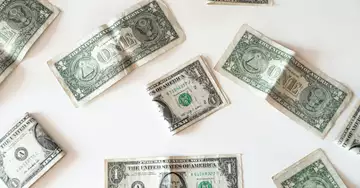The much-watched UST stablecoin briefly lost its dollar peg on Saturday, falling to 0.987 before recovering on Sunday. Its sister token, LUNA, fell 10%.
As the largest algorithmic stablecoin, Terra UST has become an important - if controversial - backbone of the crypto economy.
This weekend's Depeg was not the first (nor the largest) in Terra's history, but it is the first time the algorithmic stablecoin has lost its peg since launching its much-watched bid to build bitcoin and avalanche reserves.
The depeg did not prompt Terra to tap its bitcoin reserves on Saturday, as the deployment of hundreds of millions of dollars in bailout funds appeared to be enough to bring the token back to around $1.
What happened
The de-pegging appeared to begin with a series of major withdrawals from Anchor Protocol, a credit market that offers high returns to users who deposit UST. Over the weekend, total UST deposits at Anchor fell from $14 billion to $11.2 billion (total UST in circulation is $18 billion).
Large amounts of UST were also withdrawn from the liquidity pools of Curve, a decentralized financial protocol (DeFi) that allows users to exchange between stable currencies such as UST. A $150 million liquidity withdrawal came from Terra makers Terraform Labs (TFL). TFL claimed on Sunday that they made the withdrawal as they prepared to move funds between pools, but they redeposited $100 million after determining that UST was trading at a discount to other stablecoins.
To add a touch of conspiracy to yesterday's events, a single wallet also caused a stir by dumping $84 million worth of UST on Ethereum and $108 million on Binance. This has led to speculation in the Terra community that the depeg is a "coordinated attack."
The reaction
Do Kwon, the outspoken founder of Terraform Labs, spoke out on Saturday with a series of jokes and jibes against "anons" who spread "fud" (fear, uncertainty and doubt).
At one point, Kwon tweeted a chart claiming that a purse was responsible for 62% of anchor withdrawals. He quickly deleted the tweet, presumably after realizing that the "62%" figure referred to "all other" wallets and not to any particular wallet.
After Kwon started tweeting on Saturday, a single wallet emerged to save UST's peg. Within about 10 minutes, the wallet exchanged more than $200 million of UST for Tether to balance UST's curve pools, raising the price. More exchanges continued Sunday morning as UST's price recovered.
Some have speculated that the savior wallet belongs to Jump Crypto, a financial firm with close ties to Terra and Terraform Labs. Jump is the same firm that stepped in for $320 million in February to exploit Solana's Wormhole Bridge.
What is Terra.
Terra UST relies on another token, LUNA, to hold its one-dollar price through a series of on-chain mint and burn mechanisms.
Recently, Do Kwon has made headlines for using Luna to buy Bitcoin (and other cryptocurrencies) to partially support UST. This has been portrayed as a way to secure Terra's bond while maintaining decentralization, but Do Kwon and TFL's central role in buying up Bitcoin has fueled claims that Terra is centralized.
To date, there has been no concrete link between Terra and its BTC/AVAX reserves, leading to questions on Saturday as to whether (or how) the currencies may have been used to defend Terra's bond. During this latest event, the reserves have so far remained untouched.
Terra and Luna are currently the 9th and 10th largest cryptocurrencies by market cap according to CoinMarketCap.
Luna's price has dropped 10% in the last 24 hours and is now worth $66, according to CoinGecko. UST has mostly recovered and is now trading at $.998.

